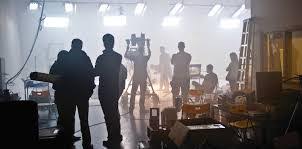The
filming stage will be a lot easier if you’ve followed the planning guidelines
first.
Shooting
simple films
If you’re
just shooting a record of a place or event you might not need to follow a
storyboard or script. But you must have an idea of what you’re going to film,
even if it’s just a simple shot list. Make sure you get a variety of shot
sizes: extreme long shots to show the place, long shots and mid shots of
people, and plenty of close-ups of people and things.
Ten shooting
tips for beginner filmmakers
Are you
ready to start filming?
You need to
set up each shot carefully. You may need to move the camera to a different
position to get the framing, the light and the background right.
•Check the
framing. Make sure you don’t cut out anything important, and that you don’t
include anything distracting or confusing.
•Check the
light. Look at the shot in your viewfinder or on the screen. Does it look
right? If it looks  too bright or too dark, can you change the exposure? (set it
manually or use exposure compensation).
too bright or too dark, can you change the exposure? (set it
manually or use exposure compensation).
 too bright or too dark, can you change the exposure? (set it
manually or use exposure compensation).
too bright or too dark, can you change the exposure? (set it
manually or use exposure compensation).
•Check the
focus. Is the shot sharp? If it’s a shallow focus shot, is the right part of
the scene in focus?
•Check the
sound. Get everyone to be quiet, then listen for half a minute. Can you hear
anything that will come out on your film? Is there anything you can do about
it? If you can, check the sound on headphones.
•Check that
everyone’s ready. Say ‘Standby’ or just tell people that you’re about to start
filming.
Getting
everything you need
With actors or
presenters, you’ll need to rehearse the scene a couple of times before you film
it. Get them to run through the scene a couple of times, making any changes to
their positions and performances. Then start to work out where to put the
camera for each shot. This process is called blocking.
NEXT STAGE






No comments:
Post a Comment